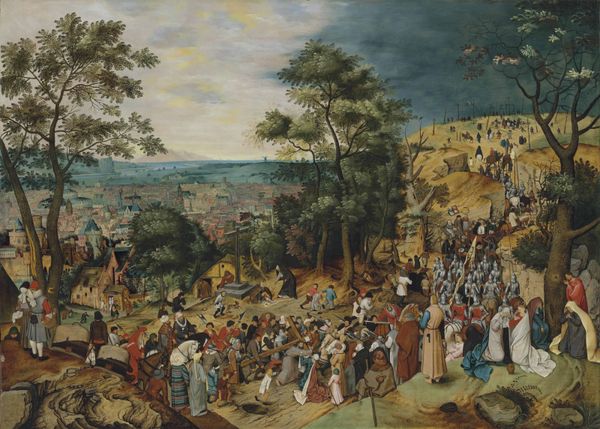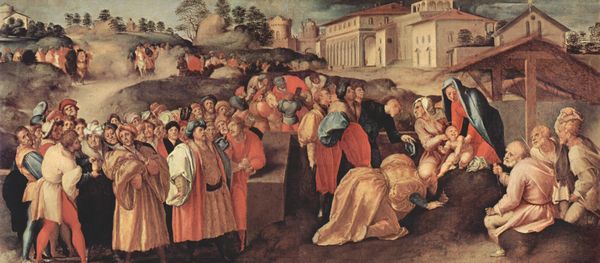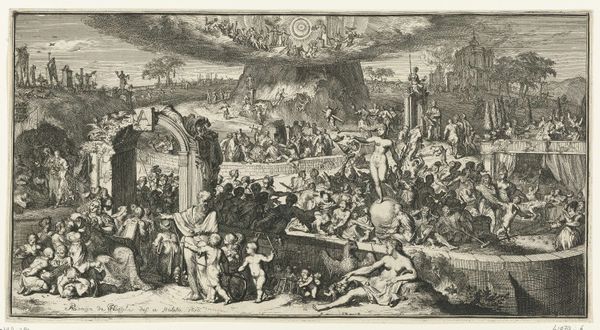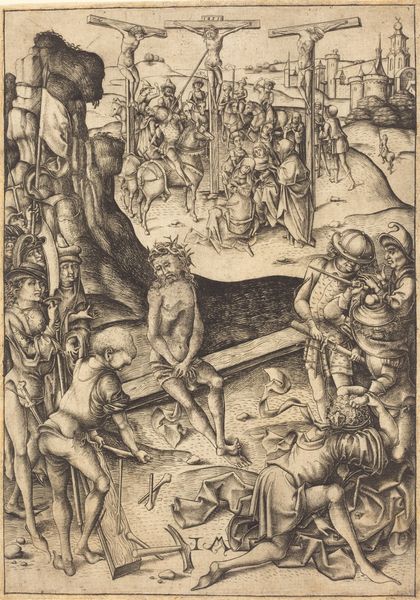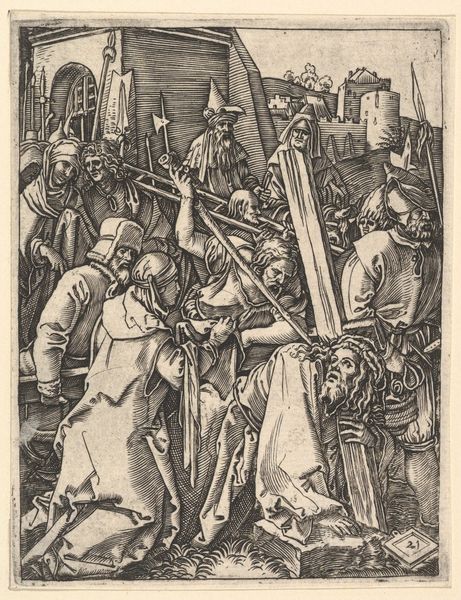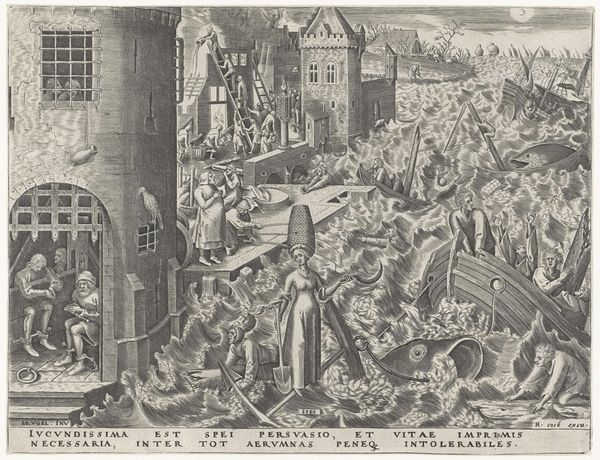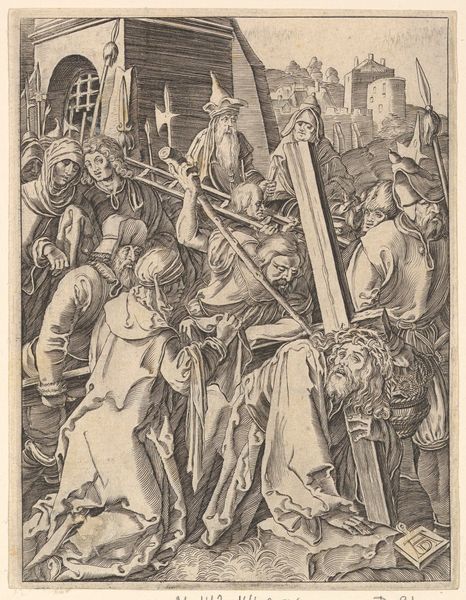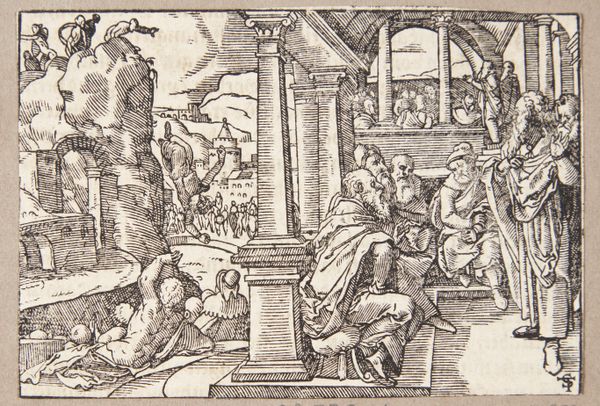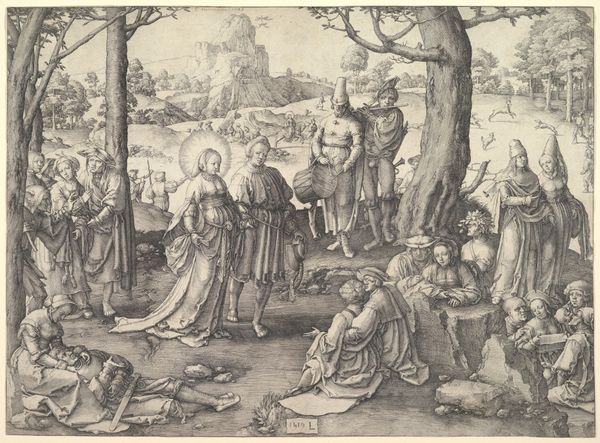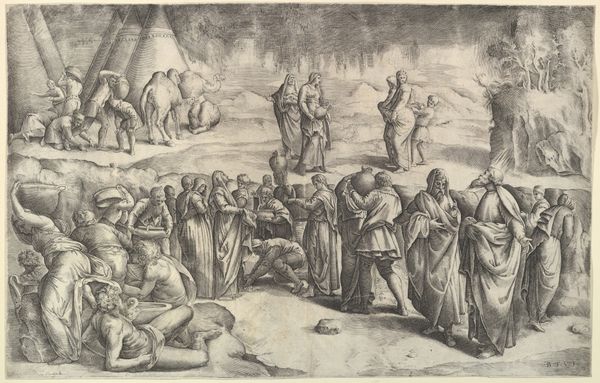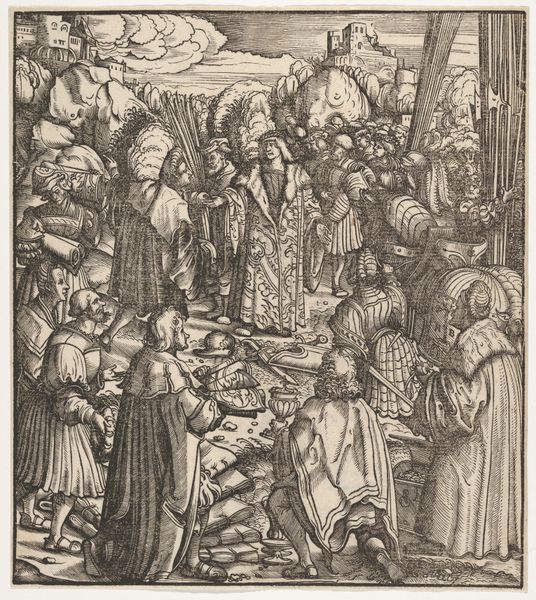
oil-paint
#
narrative-art
#
oil-paint
#
mannerism
#
figuration
#
oil painting
#
naive art
#
genre-painting
#
history-painting
Copyright: Public domain
Editor: So, here we have Pieter Brueghel the Younger’s "Adoration of the Magi," an oil painting depicting a classical scene. It strikes me as incredibly detailed, almost overwhelmingly so, with so many figures crammed into the composition. How do you interpret this work? Curator: The overcrowding, I think, reflects not just a scene, but the symbolic weight of such gatherings. Brueghel employs the Adoration as a canvas upon which to explore broader human themes. Notice how faces become types, how the figures represent different states of awe, skepticism, or even indifference. Editor: That’s a good point! I was focused on the number of people, but I didn't consider how expressive their individual gestures were. Can you expand on that symbolic element? Curator: Look closely. The dilapidated stable contrasted against the regal bearing of the Magi. The composition pulls in both sacred history and then places it alongside observations of daily life. Think about what it means to take this holy moment, this Adoration, and frame it with the mundane, and, potentially, to secularize its image. How does that reading resonate with you? Editor: I suppose that tension does create a kind of uncomfortable but honest feeling. The sacred within the everyday... I hadn't thought about it that way. Curator: The symbolism transcends simple depiction, wouldn't you agree? It’s a commentary on power, faith, and humanity’s relationship to both. We are all witness, we are all the crowd, shaped by the symbols that this moment evokes across the ages. Editor: Absolutely. Now I’m thinking about how persistent those themes have been throughout history, continually reimagined in art. Thanks, this was extremely helpful! Curator: A fascinating exchange, I'm left with plenty to think about as well!
Comments
No comments
Be the first to comment and join the conversation on the ultimate creative platform.
